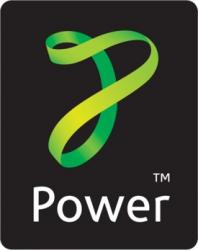 At DAC, I happened to bump into Kaveh Massoudian of IBM, who is also the CTO of power.org, the consortium that deals with all things PowerPC. I previously met him when I was at Virtutech which was the era when power.org was formally established. A little bit of history: PowerPC was created in 1991 jointly by IBM, Freescale (then Motorola Semiconductor) and Apple (Macs would all become PowerPC based before the switch to Intel architecture a few years ago). So it was always a multi-company effort. It was designed as a 64/32 bit scalable architecture from the beginning. power.org was created in 2004 to pull together the whole ecosystem around the architecture.
At DAC, I happened to bump into Kaveh Massoudian of IBM, who is also the CTO of power.org, the consortium that deals with all things PowerPC. I previously met him when I was at Virtutech which was the era when power.org was formally established. A little bit of history: PowerPC was created in 1991 jointly by IBM, Freescale (then Motorola Semiconductor) and Apple (Macs would all become PowerPC based before the switch to Intel architecture a few years ago). So it was always a multi-company effort. It was designed as a 64/32 bit scalable architecture from the beginning. power.org was created in 2004 to pull together the whole ecosystem around the architecture.
PowerPC is really the third architecture, along with Intel and ARM. Their high level strategy is to let Intel own the PC market, let ARM own the wireless market (“let” as in admit that it is game-over in those markets) and try and own as much as possible of everything else: video games, aerospace, military, networking, base-stations, automotive etc. Did you know that the Wii, the Xbox360 and the Playstation game consoles are all based on PowerPC? Of course MIPS is still around, as are other processors (especially in automotive) but they are largely confined to certain segments. For instance, MIPS is dominant in the set-top-box market (all those DVRs).
The challenge that PowerPC faces is that, outside of video game consoles, most of these markets are not that large individually. To design an SoC really requires the possibility of shipping 10M units, and if the market is going to be shared with other competitors then that means a market of, perhaps, 50M units. There just aren’t that many markets that big outside of PC, wireless and video-game.
Processor business is all about software. Once a software base has been built up then binary compatibility means that it is impossible to displace one processor with another based on any features of the processor. So power.org is focusing much more on the software dimension. IBM is putting some of the Rational technology together with (I’m assuming) Eclipse and so forth to create much more productive software development environments for embedded design. It has been a constant theme this DAC that somebody needs to do something to improve the way embedded software is developed. IBM, for one, seems to at least be trying.
Another thing I asked him was what he thought of Wind River being acquired by Intel. A lot of Wind River’s business is tied to the PowerPC architecture; for example, the Boeing 787 software is PowerPC and Wind River based. It is the same the other way round. A lot of PowerPC business is tied to Wind River. It is not completely so, Montavista and Green Hills also have strong positions in certain end markets. Kaveh said he didn’t entirely understand why Intel had done it. Wind River is not used much on Intel architecture designs, even Atom-based ones. Maybe Intel wants to change that or maybe they simply decided to own a key piece of their competitors’ infrastructure. Intel has historically, of course, owned the PC (along with AMD shipping a little) but they’ve not done very well outside that space. With the Atom deal with TSMC they are clearly trying to change that and start to get traction in the SoC space. If systems are software and silicon, then Intel clearly intends to be a player there. Plus they now have a relationship with many PowerPC customers that they’d like to understand better and, presumably, eventually switch to Intel silicon in the long term.
